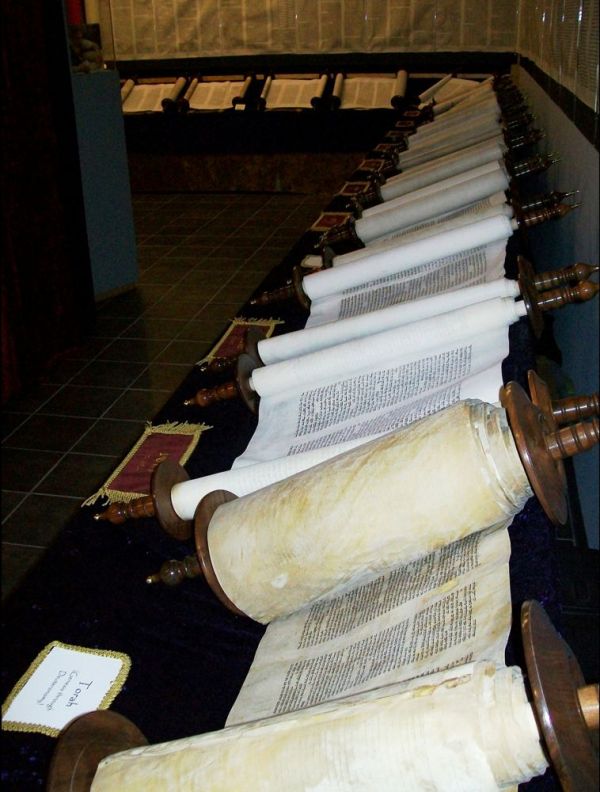(Lk 3:15-16.21-22)
Luke 3:15 For the people were waiting, and all wondered in their hearts concerning John, whether he was not the Christ,
Luke 3:16 And John answered them all, saying, I baptize you with water: but there cometh one mightier than I, unto whom I am not worthy to untie even the strap of his sandals: he shall baptize you in Holy Spirit and fire.
Luke 3:21 And when all the people were baptized, and while Jesus, having also received baptism, stood praying, the heaven was opened
Luke 3:22 and there descended upon him the Holy Spirit in bodily appearance, as of a dove, and there was a voice from heaven, "You are my beloved son; in you I am well pleased."
The question that is posed here and that will be the reason for revelation is the identity of John: "whether he was not the Christ", i.e. the Messiah awaited by Israel. V. 16 places John in direct confrontation with Jesus on the one hand, and with two different types of baptism on the other. Jesus is presented as the 'stronger' one. The title of "the stronger" is recognised in the Old Testament to God (Deut 10:17). If, therefore, Jesus is referred to as 'the strongest', Luke now quantifies the distance between John and the one who is 'the strongest', measuring it with the expression: 'I am not worthy to untie even the lace of my sandals'. Slave labour. Well, the distance is such that compared to 'the Strongest', John is not even worthy to be qualified as a slave. This is the distance that separates John from Jesus.
The effects of this gap between the two are indicated by comparing the modalities of the two baptisms: 'I baptise you with water [...] he will baptise you with the Holy Spirit and fire'. The latter expression can be read as an endiad: the Holy Spirit who is fire. God appears to Moses on Mount Horeb in the form of a fire that does not burn and guides his people in the desert in the form of a pillar of fire that enlightens them and protects them from their enemies. A fire that also expresses both God's wrath and justice against the infidelities and enemies of his people. This fire is juxtaposed with the Holy Spirit and, read as an endiad, is the Holy Spirit and expresses the power of his disruptive nature, but at the same time it is placed in the midst of men as an action of divine judgement.
Note Luke's use of the tenses of the verb to baptise: the baptism of water is governed by the indicative present tense and says the present state of things; a baptism of penance and preparation in view of another baptism, but in itself devoid of any regenerating force. A baptism, therefore, still imperfect. On the other hand, the baptism of the Holy Spirit and fire is governed by the verb in the future tense, since it concerns the times after John, inaugurated by "the stronger" of him.
A Holy Spirit whom all evangelists describe with reference to the dove. The reference to the dove is somewhat peculiar, since nowhere in the Bible is God referred to the dove. The choice of the dove probably stems from two biblical images: from Gen 1:2 where it is said that "the spirit of God hovered over the waters"; and in the account of the universal flood, where it is said that Noah released a dove to see if the earth was still covered by water. In both cases Noah's hovering and the dove have to do with water, just as the Spirit has to do with the baptismal waters, those of the Jordan.
V. 22 presents the public investiture of Jesus, a kind of prophetic anointing in the Spirit, giving him all divine authority and power, with which he is clothed not only by mandate but also by his nature. Luke provides here the key to understanding not only the person of Jesus, but also his own mission: Jesus does not work on his own, but in a Trinitarian form. There is in fact here the presence both of the Father, in the form of a voice, who recognises in Jesus his Son: 'You are my beloved son, in you I am well pleased'; there is the Holy Spirit who descends upon Jesus and remains there; and finally, there is Jesus himself, the Son of the Father. Father and Holy Spirit, therefore, work in and with Jesus, who is the action of the Father, the historical space where the Father works with the power of his Spirit. The entire mission of Jesus therefore acquires a markedly Trinitarian significance.
Argentino Quintavalle, author of the books
- Revelation - exegetical commentary
- The Apostle Paul and the Judaizers - Law or Gospel?
Jesus Christ true God and true Man in the Trinitarian mystery
The prophetic discourse of Jesus (Matthew 24-25)
All generations will call me blessed
Catholics and Protestants compared - In defence of the faith
(Buyable on Amazon)




